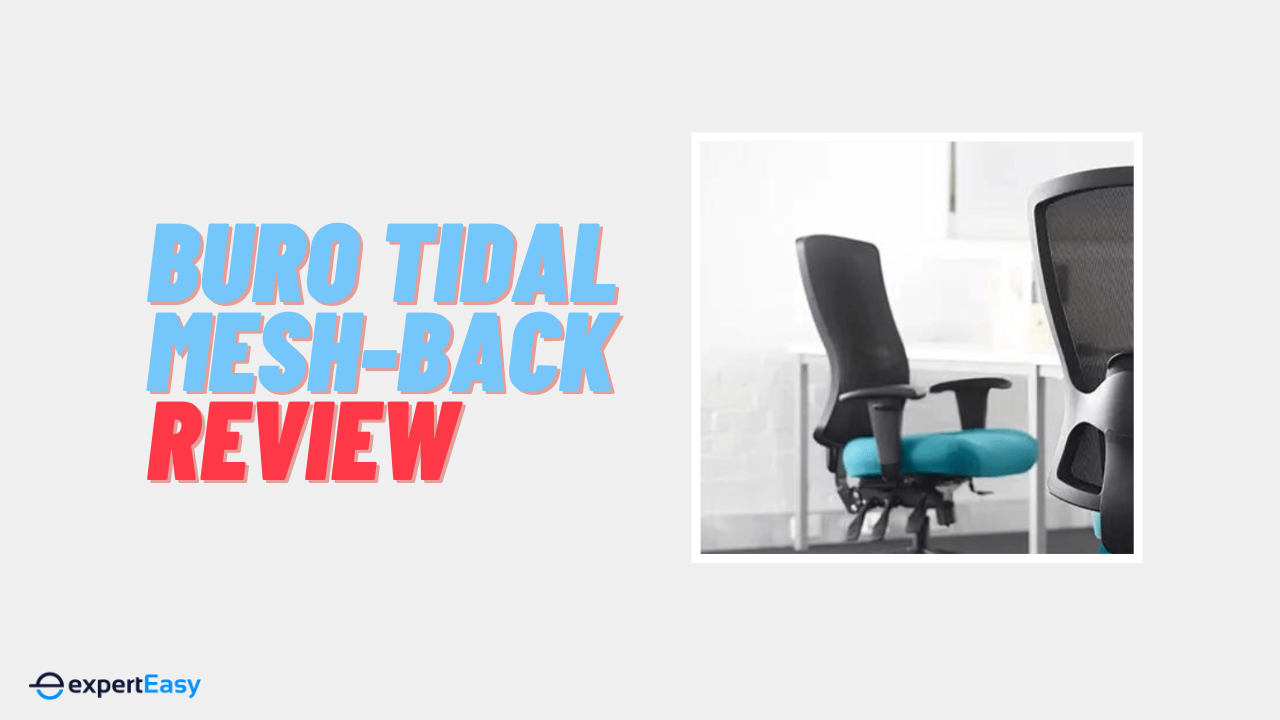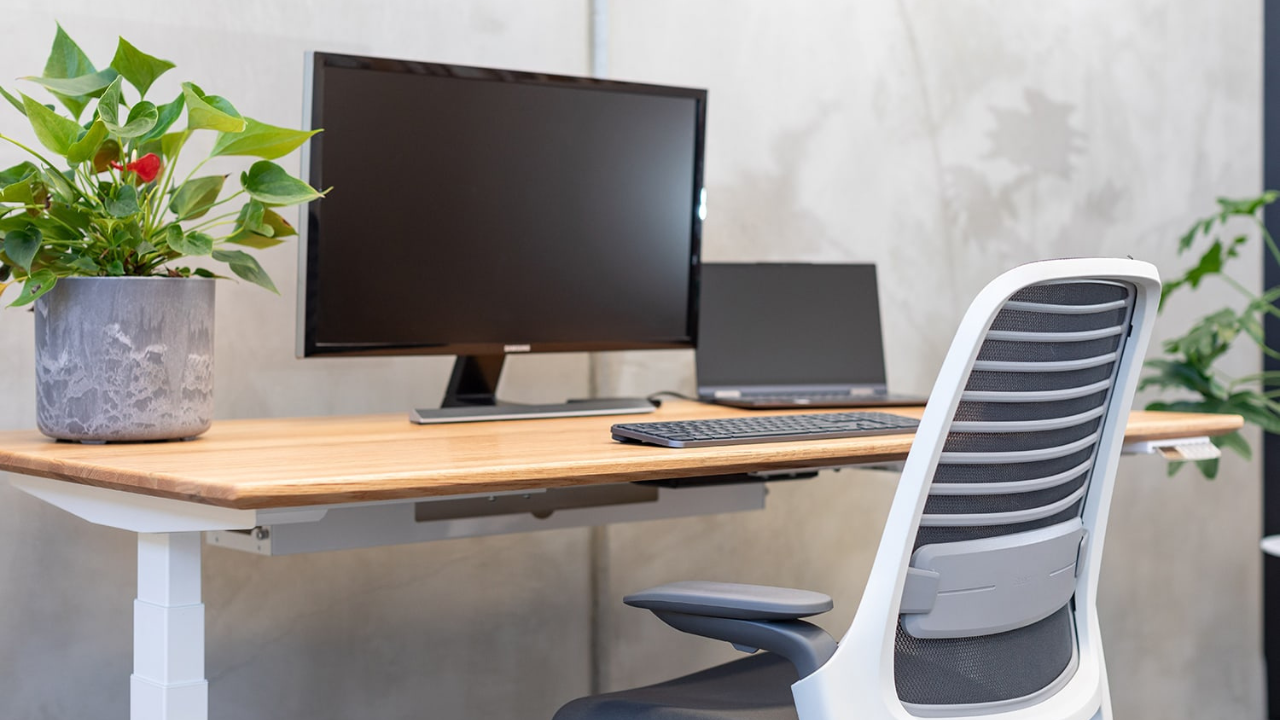Office chairs should offer adequate comfort and support to the musculoskeletal health of the users. This is why ergonomic chairs are preferred for long working hours over traditional office chairs. One of such crucial offerings of ergonomic chairs over the traditional option is lumbar support.
Lumbar support is an important ergonomic feature for office chairs. It offers support to your lower back and helps reduce back pains and strains, among others. In this article, we discuss everything you should know about this ergonomic feature.
What is Lumbar Support?

The lumbar support is a material designed to offer support to the lower back to relieve pressure and improve spinal alignment. Sitting on a work chair for long hours without lumbar support can put stress on the lower back, causing back aches and more grievous long-term effects.
The lower back area consisting of the five vertebrae between the diaphragm and sacrum is called the lumbar.
Lumbar supports are added to ergonomic office chairs and in some car seats to improve user comfort and provide relief from lower back aches. You can add lumbar support to your ergonomic office chair if it already does not have one.
Where Should the Lumbar Support Be?
When not properly adjusted for tension and width, an ergonomic chair with lumbar support can still be uncomfortable to use. Since the spine curves around the lumbar region, the support from your ergonomic chair should align with that curve. Normally, the base of the lumbar support should be about 5 to 7 cm below the waistline. Research also shows that for most people, the average desired height of lumber support is usually 190 mm off the seat.
It is important to set your office chair seat depth and pan to keep your hips aligned above your knees. If your hips go down below the knee, your lumbar support will be in the wrong position.
For most people, a lumbar depth between 1.5 and 5 cm is ideal. Women may require increased curvature for their lumbar support. And a higher body mass index may require taller lumbar support to target higher parts of the back.
Types of Lumbar Support
There are many types of lumbar support for specific applications. For office chairs, there are four main types of lumbar support. You'll find other types for medical and therapeutic use, such as wedges, foam rollers, back braces, cushions, therapeutic lumbar support, and inflatable lumbar supports. We'll focus on the four types of lumbar support used in office chairs.
1. Adjustable Lumbar Support
This type of lumbar support can be adjusted to suit different body sizes and shapes. You can manually change the position and dimension of the support to the degree that suits you. The key adjustments that can be made are:
- Height: You can move the lumbar support vertically to be well positioned for the lumbar region.
- Tension/Firmness: The tension is mostly adjusted with a knob or dial. This controls how firm or soft the support is.
- Depth: Adjustment to the depth of the lumbar support is a change to how much it bulges outwards or inwards against the lower back.
2. Fixed Lumbar Support
Fixed lumbar supports are not adjustable to different shapes or body sizes. They are usually found in low-budget office chairs that offer basic comfort to the user. The main advantage of it is the price; it is cheap and also offers more comfort than traditional office chairs that do not have lumbar support. Avoid fixed lumbar supports when choosing an ergonomic chair if you have a sensitive back.
People with sensitive backs should invest in adjustable lumbar support better than a fixed one. You can still get a comfy ergonomic chair on a budget! Similarly, you could purchase a lumbar support pillow to complement your office chair.
3. External Lumbar Support
If you have a chair that does not have any form of lumbar support, you can use external lumbar support to fill that void. There are ergonomically designed external lumbar support with varied sizes and shapes that you can purchase should you need support for your lower back on your office chair.
Similar to purchasing an external lumber support cushion, you could use small hand-made head pillows or cushions as lumbar support. This is a DIY approach and is mostly not recommended since the effectiveness of the support they provide is most often very low.
4. Dynamic Lumbar Support
Automatic adjustment is the hallmark of dynamic lumbar support. These types of lumbar support offer a dynamic change in firmness and depth that suits the body shape and size of the user or the current sitting position. This is similar to the adjustable type, except you don't need to physically adjust this type.
Many dynamic lumbar supports are made of flexible mesh contours and polymer gel. This type of support is readily found on high-end ergonomic chairs. It is the most expensive and versatile of the four types.
Benefits of Using Lumbar Support
Lumbar supports are uncompromisable when choosing an office chair. Here are some crucial benefits they offer.

Benefit #1: Spinal Alignment and Improved Posture
The spine is made up of a total of 33 interlocking bones called vertebrae. The lumbar is after the thoracic and just before the sacral. Any deformation to the lumbar will affect the whole spine structure.
Sitting in a bad position for extended hours regularly, the spine may lose alignment. This may be why some people have a slightly bent back after a while. The use of lumbar support ensures the lumbar receives adequate support to remain in shape and the whole spine in return.
Benefit #2: Relieves Pressure and Eliminates Back Pain
When sitting in a bad position, the muscles and ligaments around the lumbar get stressed due to changes in their length to keep the spine in its natural alignment. If this unnatural position is maintained, the constant stress becomes a discomforting feeling called back pain.
With lumbar support, this pressure on the skeletal structures around the lower back is avoided, and so are the back aches. It is important to practice a good sitting posture to relieve not only your lower back but shoulders, neck, and eyes.
The back pain you feel when sitting in a bad position for a long time is called creep. This is due to the changing shape of the ligaments and muscles around your spine, especially the lumbar!
Benefit #3: Promotes Healing and Health
Healing from lower back pains caused by bad sitting posture can be sped up with the use of lumbar support. Additionally, further pain or injury to the spine is prevented, improving your overall health in the long run.
Benefit #4: Enhances Productivity
Office chairs and other furniture have a part to play in the productivity of the workforce. Ergonomic chairs and home office setups are known factors of increased efficiency and productivity. The use of lumbar support keeps the working posture comfortable, promotes workers' health, and thus increases their productivity levels.
Is Your Lumbar Support Uncomfortable? Here's Why
If you're finding that your lumbar support isn't quite living up to its expectations, you're not alone. We're going to delve into the reasons behind this discomfort and provide some helpful insights to improve your sitting experience.

#1. Incorrect Positioning
One common reason could be incorrect positioning. Lumbar support is designed to maintain the natural curve of your lower back, providing much-needed support and reducing strain. So, if the lumbar support is positioned too low or too high, it can throw off the alignment and cause discomfort. Take a moment to adjust the position of your lumbar support to ensure it aligns with the natural curve of your lower back.
#2. Subpar Lumbar Support
Another factor to consider is the quality of your lumbar support. Not all chairs are created equal, and some may have subpar lumbar support that fails to deliver the desired comfort. Investing in a chair with adjustable lumbar support can be a game-changer. Look for chairs that allow you to customize the height and firmness of the lumbar support to suit your specific needs.
#3. Bad Sitting Posture
Additionally, it's important to be mindful of your sitting habits. Prolonged sitting in one position can cause discomfort, regardless of the quality of your lumbar support. Make a conscious effort to take regular breaks, stretch, and change your sitting position throughout the day. Incorporating some light exercises, like gentle stretches or core strengthening exercises, can also help alleviate discomfort and improve your overall posture.
How to Use Lumbar Support: Tips & Strategies
Your sitting posture while using lumbar support is particularly important for your spine health. It is not just about using an ergonomic chair. There are ways to make the best use of it.
For example, sitting on the front end of the chair away from the lumbar support is an ineffective way of using the chair. Follow these tips to make the most of your lumbar support:
- Sit well in your seat to allow your back to rest on the lumbar support.
- Do not slouch when sitting to avoid bending your spine in an unnatural position. This position will cause pain in the long run.
- Ensure both your feet are resting firmly on a horizontal surface.
- Within every hour, ensure to take a movement break. Walk, stretch, and flex your limbs.
- Maintain a right angle between your hips and knees while sitting.
- Maintain your spine shape by keeping your head, shoulders, and pelvis aligned.
It is important to move frequently away from your sedentary position. You can still have lower back aches if you don’t move enough from your desk all day with the best of lumbar supports.

Frequently Asked Questions (FAQs)
Here are some frequently asked questions on the use of lumbar support in ergonomic office chairs.
Is it good to have lumbar support for an office chair?
Yes, having lumbar support in an office chair is generally beneficial for maintaining good posture and reducing the risk of back pain. Lumbar support is designed to provide extra support to the lower back, specifically the lumbar region, which is susceptible to strain and discomfort when sitting for long periods.
Can you use a pillow as lumbar support?
Yes, you can use a pillow as a temporary lumbar support if you don't have access to a chair with built-in lumbar support or if you need some extra support while sitting for an extended period. While it may not be as effective as dedicated lumbar support, a pillow can provide some cushioning and help maintain a more comfortable sitting position.
Still, note that while using a pillow as lumbar support can offer some temporary relief, it may not provide the same level of support and ergonomics as a chair with built-in lumbar support. If you frequently experience discomfort or back pain while sitting, investing in an ergonomic chair with proper lumbar support is recommended for long-term comfort and spine health.
Can lumbar support cause back pain?
Lumbar support, when used correctly and in appropriate situations, should not cause back pain. In fact, it is designed to provide support to the natural curve of the lower back and help maintain a healthy posture while sitting. However, there are a few factors to consider that could potentially lead to back pain when using lumbar support.
To avoid this, it is crucial to use it in conjunction with other ergonomic practices, such as maintaining good posture, taking regular breaks, incorporating stretching and strengthening exercises, and using a well-designed ergonomic chair that supports your entire back, not just the lumbar region.
How do I know if my lumbar support is correct?
To determine if your lumbar support is correct, pay attention to how it feels and its alignment with your lower back. The lumbar support should provide gentle pressure and fill the gap between your lower back and the chair. It should align with the natural curve of your lower back, supporting its arch.
Ensure that your entire back is making contact with the lumbar support, and avoid slouching or leaning forward. Maintaining good posture and feeling comfortable and supported are key indicators that your lumbar support is correct. Personal preference also plays a role, so adjust the lumbar support as needed to find the most comfortable position for you.
Summary
Working long hours does not have to be stressful and tiring. The right ergonomic chair with appropriate lumbar support will go a long way to ease up your work condition. Lumbar support is a potent solution to overcoming incessant back aches. Long sitting positions put pressure on the lower back only when the chair is not well designed.








